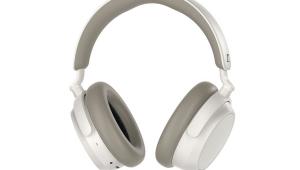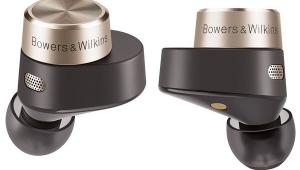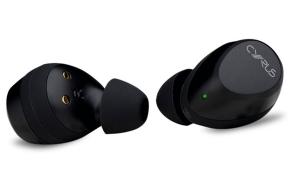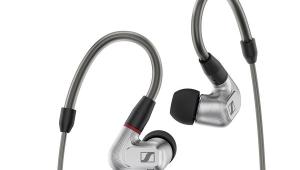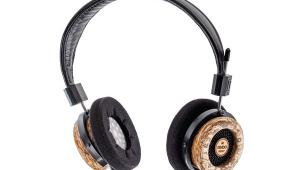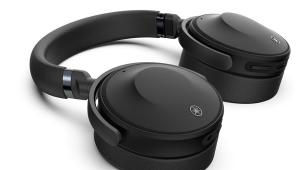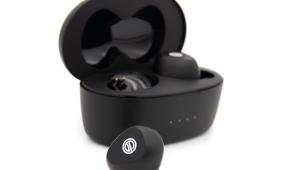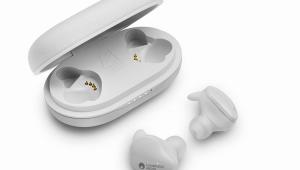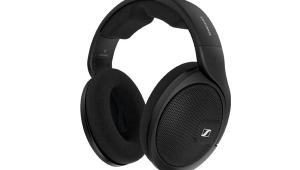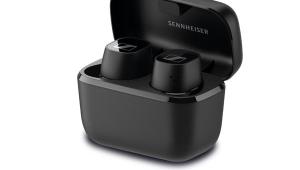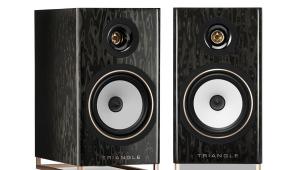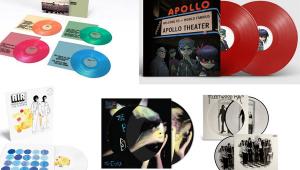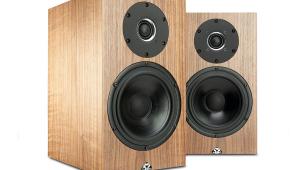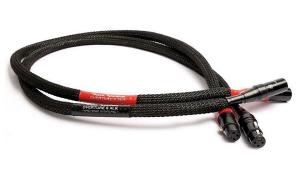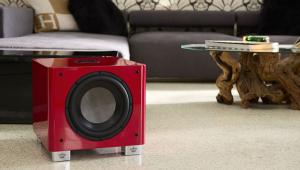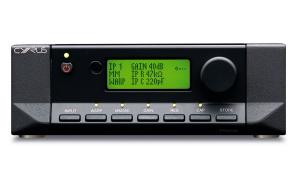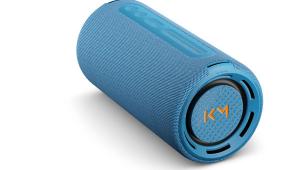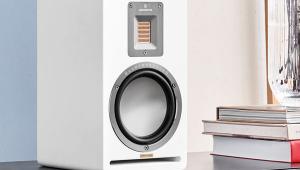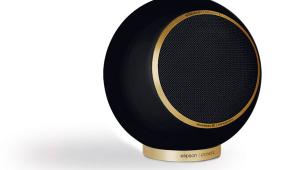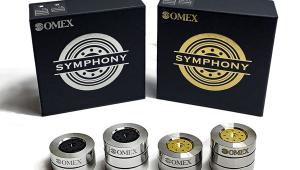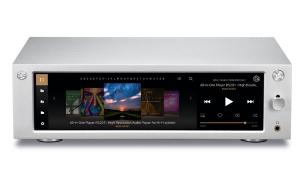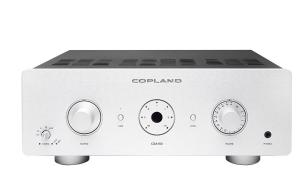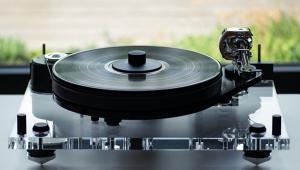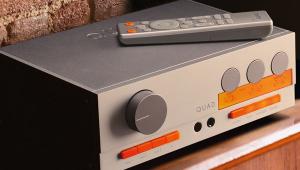Philips Fidelio L3
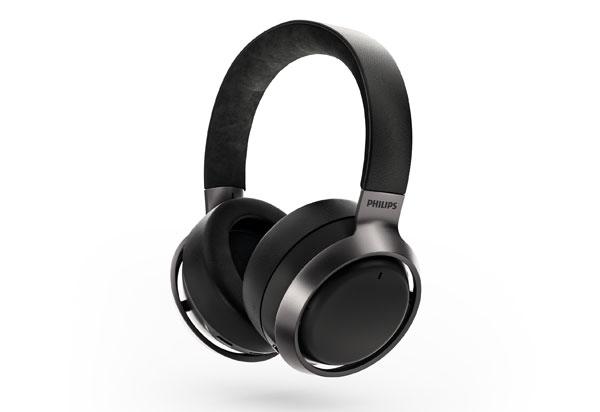
 It’s doubtful if Philips’ Fidelio headphones have ever been bought to wear as a fashion accessory. The company’s latest, the Fidelio L3, is no exception. Colour options? Dark grey. Conspicuous branding? Zippo. Distinguishing features? Pass. All right, the ear cups appear to ‘float’ behind the open aluminium frame that supports them – something of a Fidelio signifier for the true head-fi aficionado. But if you asked an artist to draw a generic pair of over-ear headphones, the result would end up looking a lot like this.
It’s doubtful if Philips’ Fidelio headphones have ever been bought to wear as a fashion accessory. The company’s latest, the Fidelio L3, is no exception. Colour options? Dark grey. Conspicuous branding? Zippo. Distinguishing features? Pass. All right, the ear cups appear to ‘float’ behind the open aluminium frame that supports them – something of a Fidelio signifier for the true head-fi aficionado. But if you asked an artist to draw a generic pair of over-ear headphones, the result would end up looking a lot like this.
Then again, for fans of products that hide a bright light under a nondescript bushel, there’s plenty to get excited about here. Following on from the recent launch of the wired, open-back Fidelio X3 (HFC 469), the L3 enters arguably an even tougher and more highly prized sector: that dedicated to premium (yet still reasonably priced) wireless, noise-cancelling headphones. It’s an area traditionally carved up by big hitters Sony, Sennheiser and Bose. Probably the best Philips can hope for, then, is high-achieving outlier and, on paper, the L3’s performance targets are more strategic than go-for-broke.
“We’re not chasing spectacular spec-sheet numbers with the L3,”commented a spokesperson. “Rather, the idea is ‘accessible high-end’, an ethos that extends to the choice of materials and build quality as well as a sound that’s rich and refined, tuned as much by ear as measurement by the Fidelio team. Bass and midrange performance need to be warm to the point of being enjoyable and not fatiguing, but without becoming coloured.”
Assets include a healthy battery life of 38 hours, which falls to a still generous 32 hours if you keep the active noise cancellation (ANC) switched on. And there’s also a quick charge option. In this case, 15 minutes plugged in gets you a handy six hours of playback wherever you happen to roam. Forget to power down when you take it off and the L3 will do it for you after a few minutes. Wireless connectivity sees support for both Bluetooth 5.0 and aptX HD. Pairing is a breeze, too. A longer, let’s say five-second, push on the power-up button sets blue and white LEDs alternately flashing and your smartphone or tablet acknowledges in the following few seconds. Key play and phone functions can then be controlled with touch gestures to the outer surfaces of the left and right ear cups. Google Assistant and Alexa are built-in so pulling up your favourite playlist shouldn’t be a chore.
The noise cancellation system uses no fewer than four microphones to minimise outside noise plus a fifth assigned to bid adios to background sounds when making voice calls. Predictably, there’s a dedicated app. As sober as the appearance of the L3 itself, it’s called ‘Philips Headphone’ and lets you adjust noise cancellation by switching between pre-set modes. Also present is a dedicated equaliser. Additionally, you can use the app to control the music you’re streaming or access song information.
The L3’s memory foam and soft leather ear pads do a pretty good job of blocking out unwanted noise on their own. No coincidence, this. Considerable effort went into making it a foundation of the design, the engineers reasoning it’s better to have less noise as a starting point which, in turn, needs less active cancelling.
The ear cups have strengthening ribs to add rigidity and minimise vibration. Apparently, many hours were spent determining their shape and what materials should be used. Different memory foams were tested for comfort and isolation properties. Originally the plan had been to use the same sustainable Muirhead leather as the headband to cover the ear pads, but this was switched to protein leather during development because it was found to give much better sonic results.
Sitting a little further back in the ear cups, the bespoke 40mm drivers feature Layer Motion Control (LMC) three-part damping, a sandwich construction consisting of PEEK/PU/PEEK layers. PEEK (Polyether Ether Ketone) is a robust, stiff semicrystalline thermoplastic material, renowned for its exceptional mechanical resistance while PU (Polyurethane) is a polymer valued for its elasticity. For the L3 drivers, PU is used as a gel. It’s sandwiched between the two layers of PEEK for its damping properties. By varying the thickness of the layers – and due to the different properties of the materials used – the performance of the driver can be fine-tuned – particularly with respect to the design of the ear cup enclosure. Naturally, for best ANC performance, the L3 is a closed-back design.
And a very intricately thought-out one it is too. Try this for attention to detail. There’s a tiny, tapered tube-cum-waveguide positioned at the back of each driver that’s shaped to allow the back pressure, such as it is, to decay without intruding. It vents close to, and is all but hidden by, the hinge. As well as helping define the L3’s sonic profile, it also played a significant part in the fine-tuning of the headphone.
Sound quality
By no means the lightest in its class, the L3 is supremely comfortable and possesses ear-defender levels of sound isolation even without the ANC switched on. Controlling things by essentially fingering the sides of your head is initially a little tricky. You get used to it. But what of the luxury sonic ride promised by Philips?
It stacks up. I own some pretty spikey, in-your-face recordings and, after experiencing them via the L3, I’m prepared to bet that whatever genre or quality of production it is fed, it will steadfastly refuse to sound in any way bright, brittle, strident or unnaturally sharp. Best say it now: even in wired guise, listening to hi-res Sting belting out Brand New Day, the inevitable softening effects of a Bluetooth/Tidal streaming collaboration removed from the equation, the tonal balance is comfortably the warm side of neutral and smooth as polished amber.
Bass is rich, plump and possesses proper timbral texture, power and extension. It also plays tunes very nicely. There’s an underlying, easy-going nature at large here that maybe doesn’t dig down with forensic intent, but is good at keeping complex elements in harmony – not least the gloriously warm, expansive and lushly layered orchestrations delivered by Prefab Sprout’s magnificent I Trawl The Megahertz – surely one of the all-time great headphone trips. The simple truth is, the L3 might not trawl the micro-detail, but it certainly carries the musical message effortlessly with a grasp of flow and tempo that never defaults to a bland, mechanical rendition. In short, it sounds lovely – slow-burning and seductive rather than stringently analytical.
Musically supple and voiced to please, then. There’s nothing wrong with that in my book. And don’t take for granted the spacious, precisely delineated, pleasingly un-bonce-centric soundstage and a dynamic compass that captures the loud and soft, highs and lows with such calm confidence. There might be more bite, drive and explicit clarity to be had elsewhere, but the L3’s balance, warmth, richness, refinement and unflustered power is hugely appealing. Oh, and the noise cancelling bit? It passes the late night, en suite loo-flushing test with flying colours. Couldn’t hear a thing.
Conclusion
Head-fi fashionistas, it’s your loss. If you think the Fidelio L3 will only get you noticed because it looks so plain, shame on you. For those happy to don a pair, allow yourself a smug inward smile. Things will probably sound so good, it will be hard to resist. Warmly recommended. DV
DETAILS
Product: Philips Fidelio L3
Type: Over-ear, wireless, ANC headphone
FEATURES
● 40mm drivers
● Bluetooth 5.0; aptX HD
● Quoted battery life: up to 38 hours
 |
Inside this month's issue:
Q Acoustics 3020c standmount loudspeakers, Perlisten R10s active subwoofer, Quad 33 and 303 pre/power amps, Acoustic Solid Vintage Full Exclusive turntable, newcomer Fell Audio Fell Amp and Fell Disc and lots, lots more...
|

